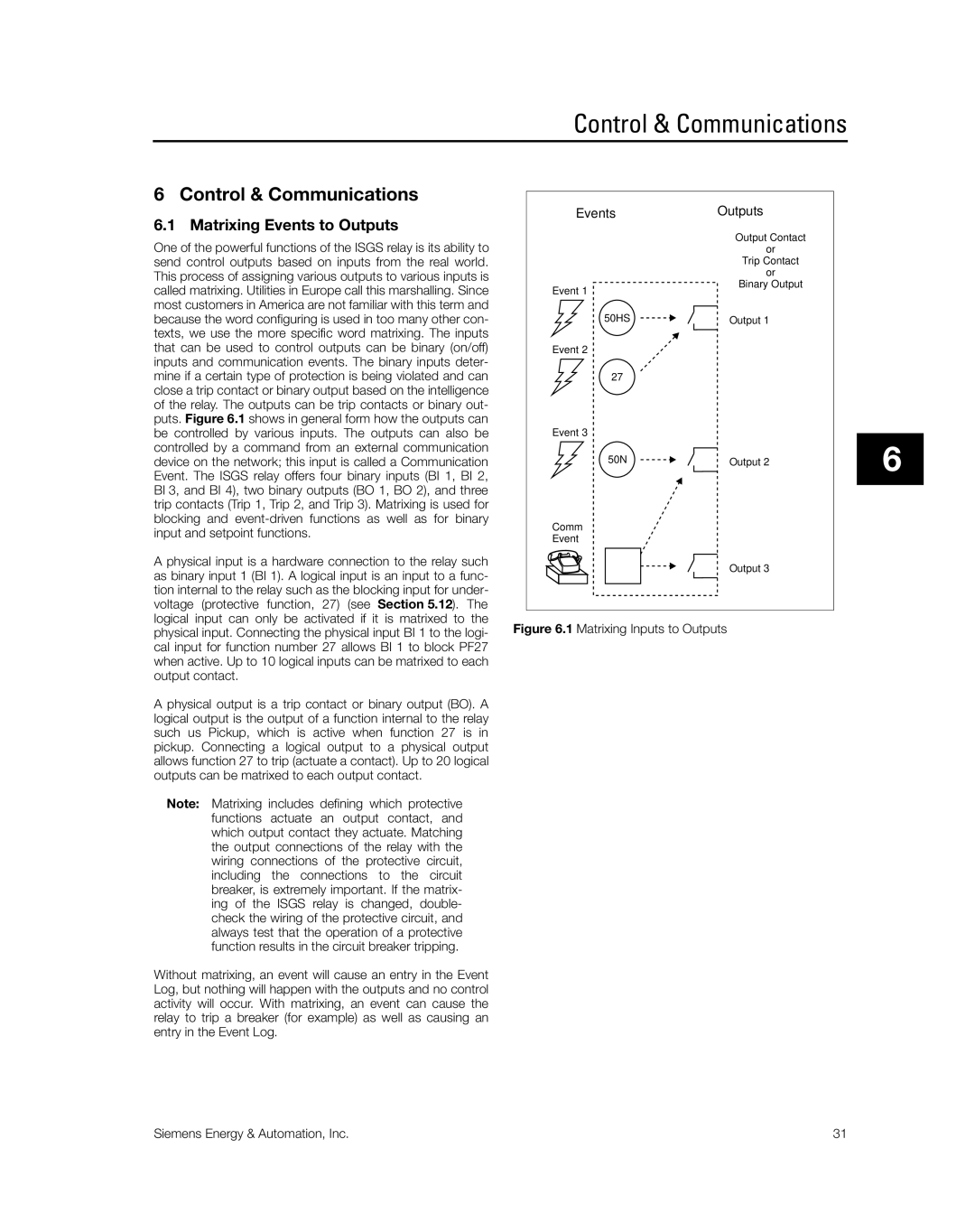
Control & Communications
6 Control & Communications
6.1 Matrixing Events to Outputs
EventsOutputs
Output Contact
One of the powerful functions of the ISGS relay is its ability to send control outputs based on inputs from the real world. This process of assigning various outputs to various inputs is called matrixing. Utilities in Europe call this marshalling. Since most customers in America are not familiar with this term and
Event 1
or
Trip Contact
or
Binary Output
because the word configuring is used in too many other con- texts, we use the more specific word matrixing. The inputs that can be used to control outputs can be binary (on/off) inputs and communication events. The binary inputs deter- mine if a certain type of protection is being violated and can close a trip contact or binary output based on the intelligence of the relay. The outputs can be trip contacts or binary out- puts. Figure 6.1 shows in general form how the outputs can be controlled by various inputs. The outputs can also be controlled by a command from an external communication device on the network; this input is called a Communication Event. The ISGS relay offers four binary inputs (BI 1, BI 2, BI 3, and BI 4), two binary outputs (BO 1, BO 2), and three trip contacts (Trip 1, Trip 2, and Trip 3). Matrixing is used for blocking and
A physical input is a hardware connection to the relay such as binary input 1 (BI 1). A logical input is an input to a func- tion internal to the relay such as the blocking input for under- voltage (protective function, 27) (see Section 5.12). The logical input can only be activated if it is matrixed to the physical input. Connecting the physical input BI 1 to the logi- cal input for function number 27 allows BI 1 to block PF27 when active. Up to 10 logical inputs can be matrixed to each output contact.
A physical output is a trip contact or binary output (BO). A logical output is the output of a function internal to the relay such us Pickup, which is active when function 27 is in pickup. Connecting a logical output to a physical output allows function 27 to trip (actuate a contact). Up to 20 logical outputs can be matrixed to each output contact.
Note: Matrixing includes defining which protective functions actuate an output contact, and which output contact they actuate. Matching the output connections of the relay with the wiring connections of the protective circuit, including the connections to the circuit breaker, is extremely important. If the matrix- ing of the ISGS relay is changed, double- check the wiring of the protective circuit, and always test that the operation of a protective function results in the circuit breaker tripping.
Without matrixing, an event will cause an entry in the Event Log, but nothing will happen with the outputs and no control activity will occur. With matrixing, an event can cause the relay to trip a breaker (for example) as well as causing an entry in the Event Log.
50HS | Output 1 |
Event 2
27
Event 3
50N | Output 2 |
Comm
Event
Output 3
Figure 6.1 Matrixing Inputs to Outputs
6
Siemens Energy & Automation, Inc. | 31 |
